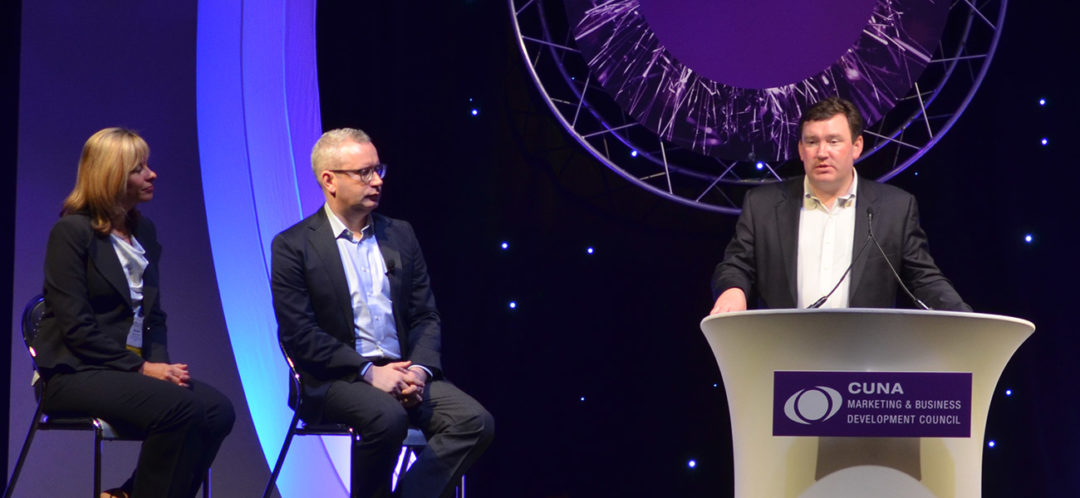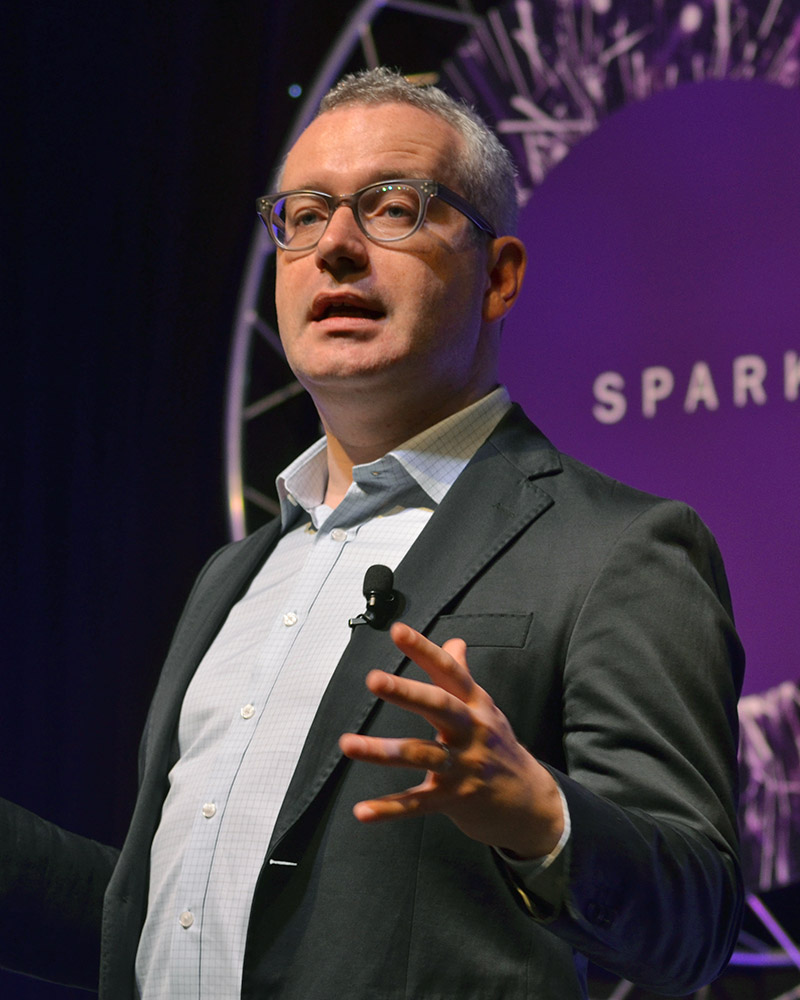
Awareness group: Let's build a brand platform for CUs
Research unearths four myths about CUs.
When you ask people about credit unions, many will respond, “What’s a credit union?”
“But when you tell them what a credit union is, they ask, ‘Why doesn’t everyone belong to one?’” says Douglas Kiker, CUNA’s chief strategic communications officer.
Click to enlarge. “Too many people don’t know what a CU is,” says Douglas Kiker, CUNA’s chief strategic communications officer.
He and two other panelists updated 2017 CUNA Marketing & Business Development Council Conference attendees about the Credit Union Awareness Initiative, an effort to create top-of-mind consumer awareness of credit unions as consumers’ best choice in financial services.
“Too many people don’t know what a credit union is, or enough to feel compelled to join,” Kiker says, evidenced by credit unions’ stagnant market share over the past decade.
CUNA, leagues, and credit unions formed the Creating Awareness Advisory Group last year to determine the best way to communicate the value of credit unions to consumers.
Early on, the working group had what Michelle Hunter describes as a “Wikipedia moment.”
“We read aloud the Wikipedia definition of credit unions, and it was a mouthful,” says Hunter, senior vice president of marketing and development for the Credit Union of Southern California in Anaheim and a member of the working group.
The definition included terms such as “member-owned financial cooperative,” “democratically controlled by members,” and “operating for the purpose of promoting thrift.”
Click to enlarge. “The messaging must be compelling and speak to consumers’ aspirations and needs,” says Michelle Hunter, SVP of marketing & development for CU of Southern California.
Even credit unions define themselves differently, she says, which doesn’t bode well for their ability to present a clear, unified, and consistent identity in the marketplace.
“When you say ‘bank,’ people know that it is,” Hunter says. “But ‘credit union’ has too much confusion or lack of awareness following it. If we can’t decide on language, how can we expect consumers to understand?”
They answer lies establishing a high-level, national definition of credit unions that will allow us to talk about the industry in a clear, compelling, and unified way, she says.
“In marketing terminology, we’d say we’re creating a brand platform for the industry,” Hunter says, similar to how the NFL is the brand platform for football. “We’re not creating a marketing campaign; the brand platform is our identity. The messaging must be compelling and speak to consumers’ aspirations and needs.”
To find the right messaging, the working group solicited multi-stage research—focus groups, credit union leader roundtable, a series of nationwide surveys with the general public, and follow-up online qualitative research—to identify gaps in credit union awareness and understand consumers’ financial services preferences.
The good news: The credit union industry has “fantastic strengths to build upon,” says Graeme Trayner, vice president of brand & communications practice for Greenberg Quinlan Rosner Research Inc.
Click to enlarge. “The CU industry has fantastic strengths to build upon,” says Graeme Trayner of Greenberg Quinlan Rosner Research Inc.
“Credit unions are associated with offering good rates on loans—better than banks’—lower fees, friendliness, and on the side of consumers,” he says. “You’re trusted, which is very powerful in today’s marketplace and society.”
But the research also unearthed four common myths about credit unions:
1. People don’t think they can join. There’s the perception that credit unions are limited to certain occupations or groups.
“Getting past this will be very important,” Trayner says.
2. Credit unions are for those in need, and membership is for those lacking in financial success or status.
"Successful people have a stronger association with banks than credit unions,” he says. “We need to overcome this bias.”
3. They don’t provide convenient access to money. Many people fear that credit unions are behind on technology and that they don’t have nationwide ATMs.
4. They’re too small. While credit unions are seen as warm and friendly, they’re also viewed as lacking sufficient scale and presence.
“People are worried about cybersecurity,” Trayner says. “They want a big guy in their corner watching out for them.”
Consumers also are familiar with the Federal Insurance Deposit Corp., but not NCUA and its federal insurance guarantee.
The best way to explain credit unions’ value proposition, Trayner says, is to focus on:
- Equity: Explaining how earnings are returned in the form of lower rates and fees, and higher dividends, and how credit unions are a friendly alternative to impersonal banks.
- Ease: Most Americans are eligible for membership—110 million consumers currently use credit unions—and there’s parity in ATMs and other technology.
- Protection: There’s a federal guarantee on deposits and protection against fraud. Plus, credit unions are a long-term ally.
“We need to show that joining a credit union helps you meet your aspirations and is a savvy thing to do,” Trayner says.
Next up for the Creating Awareness Advisory Group: An industry “roadshow” to spread the word about the initiative, the creation of a communications strategy, and the formation of a brand platform.
Send questions or comments about the effort to awareness@cuna.coop.


